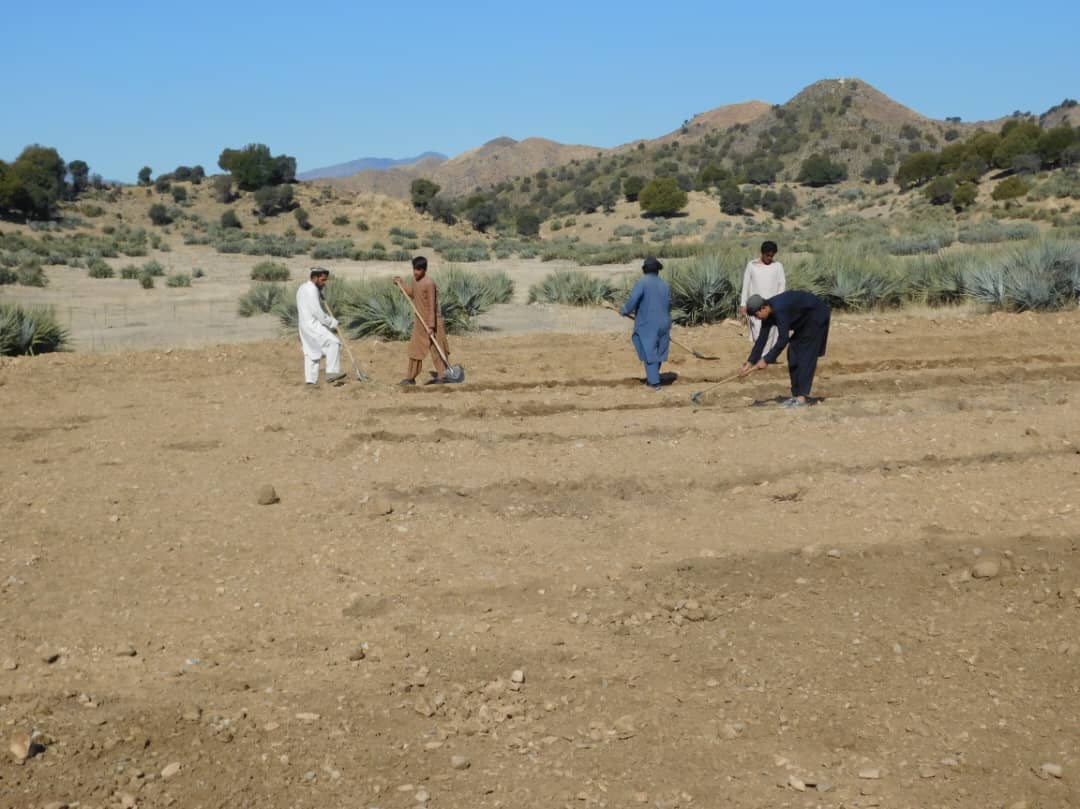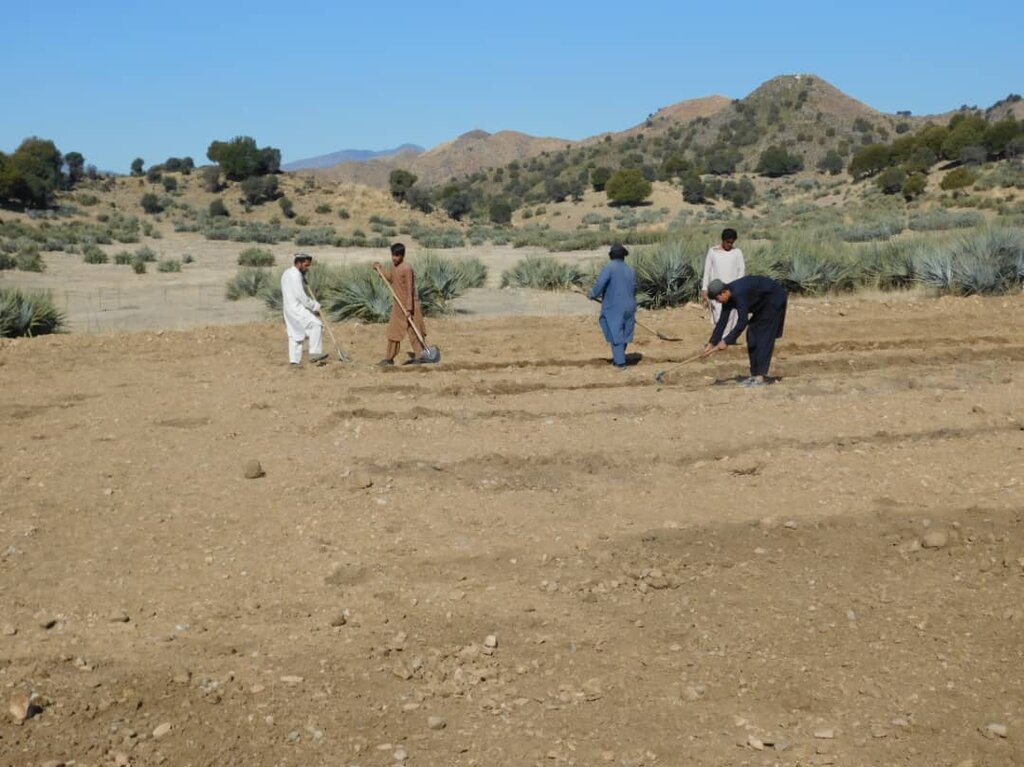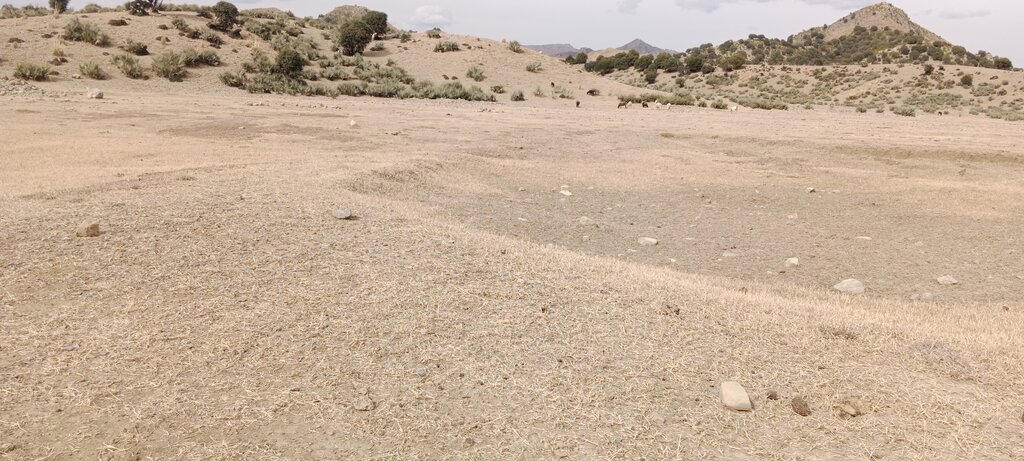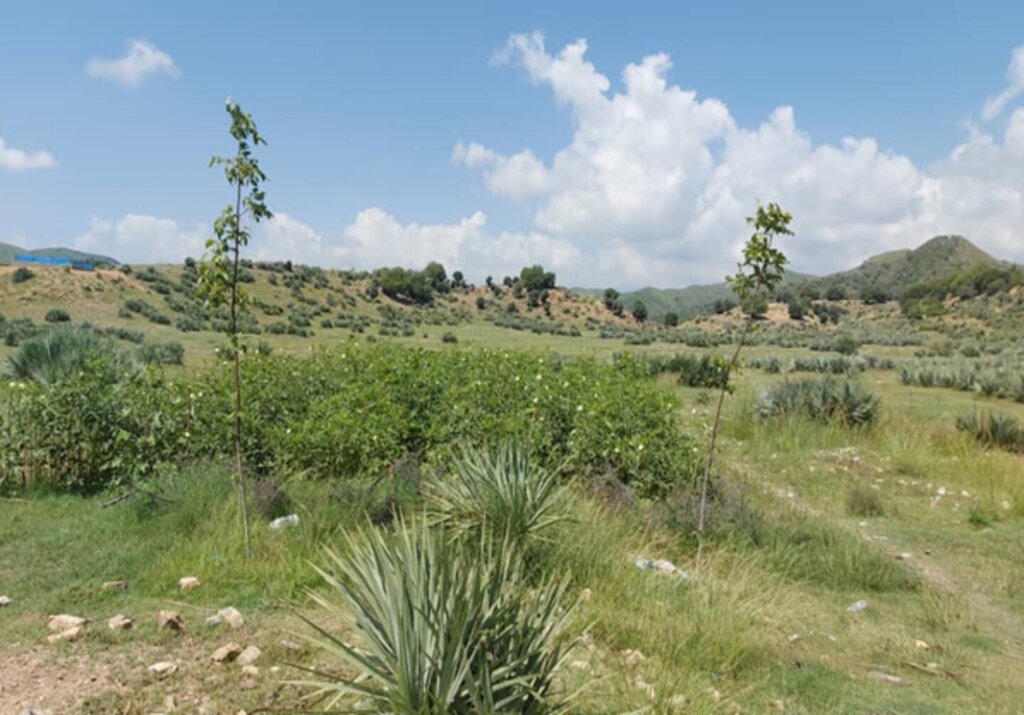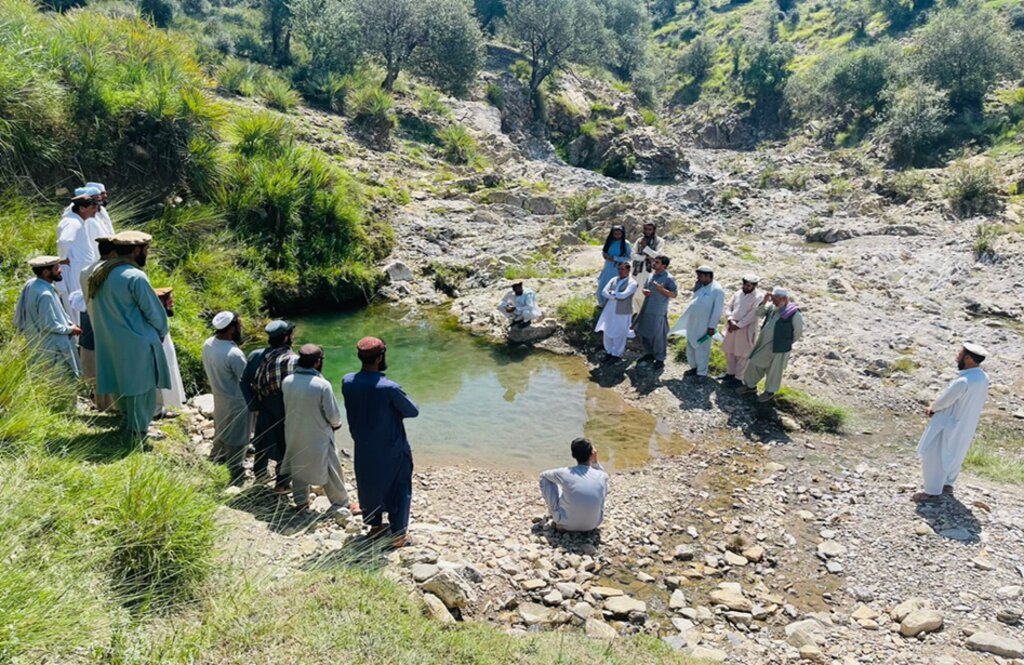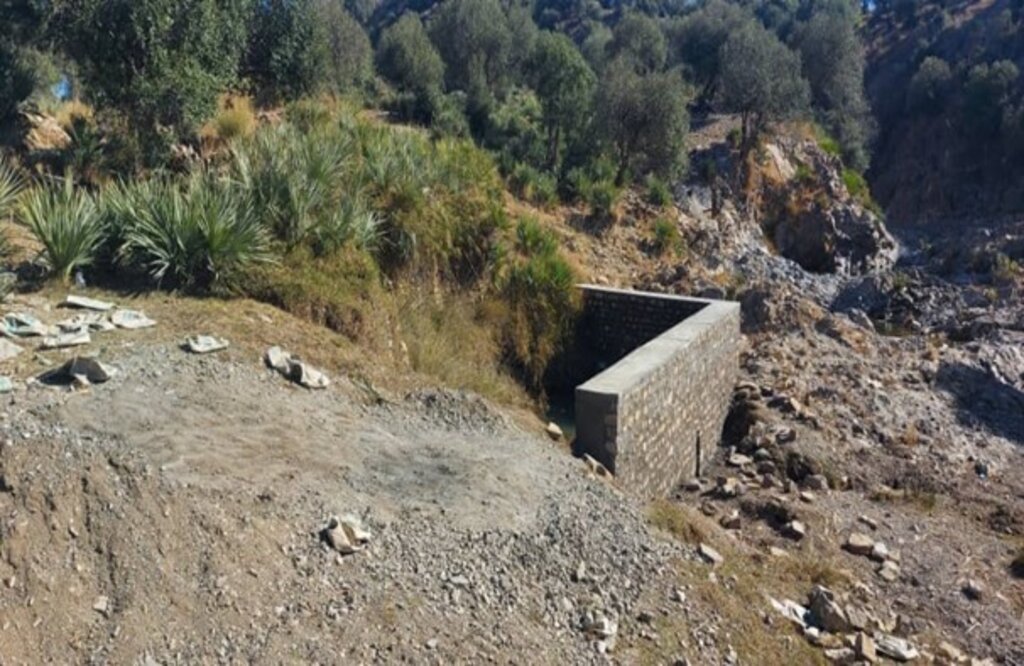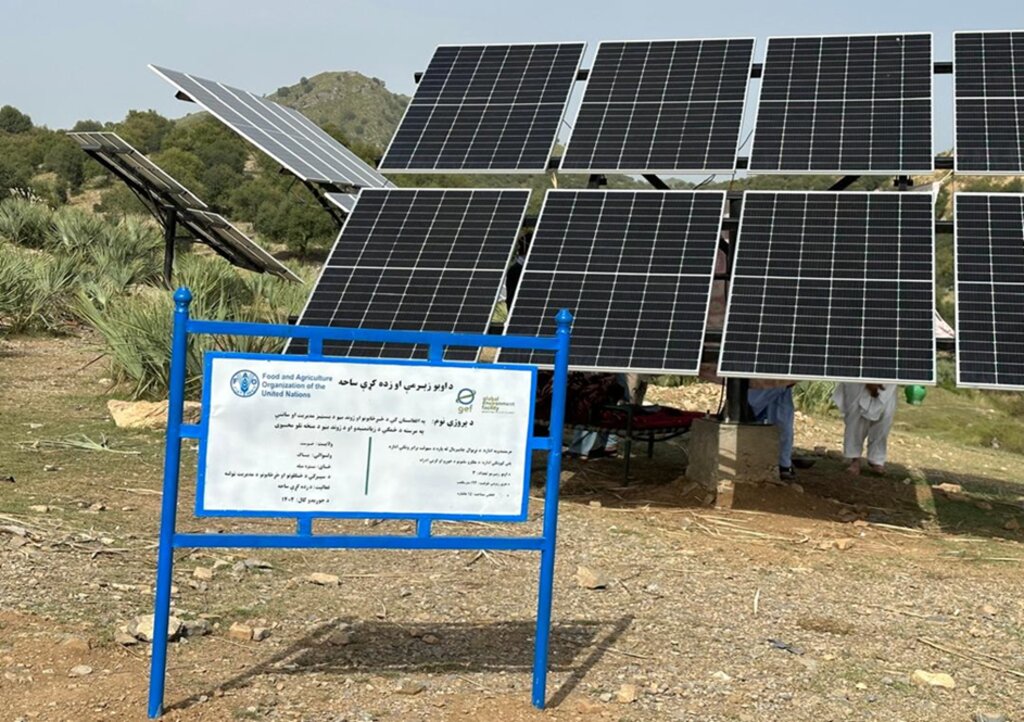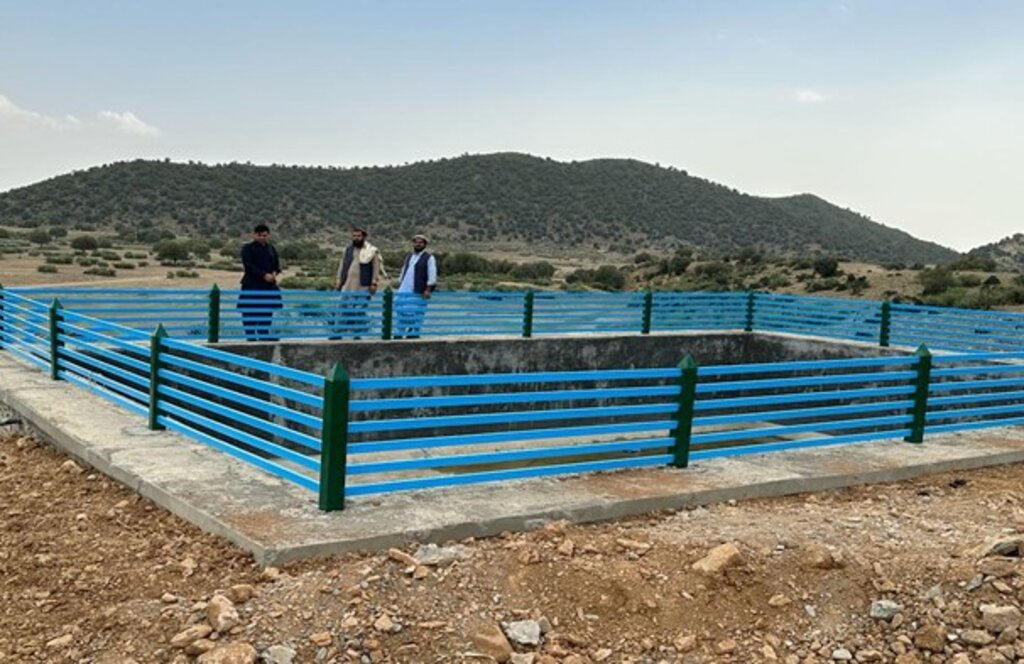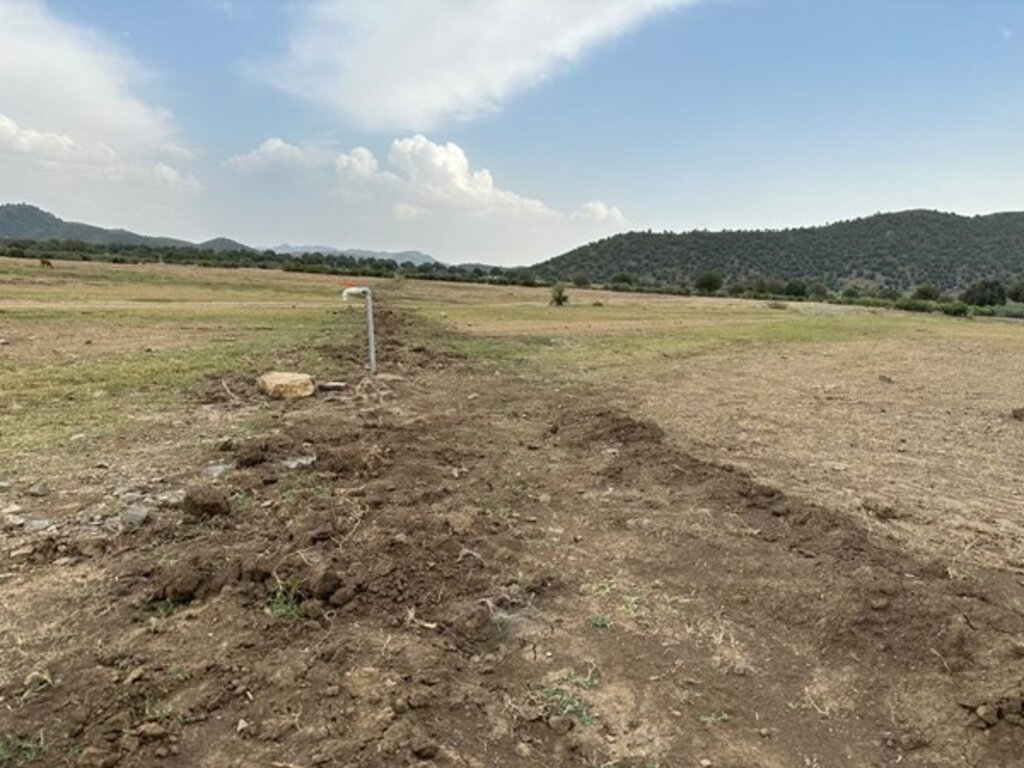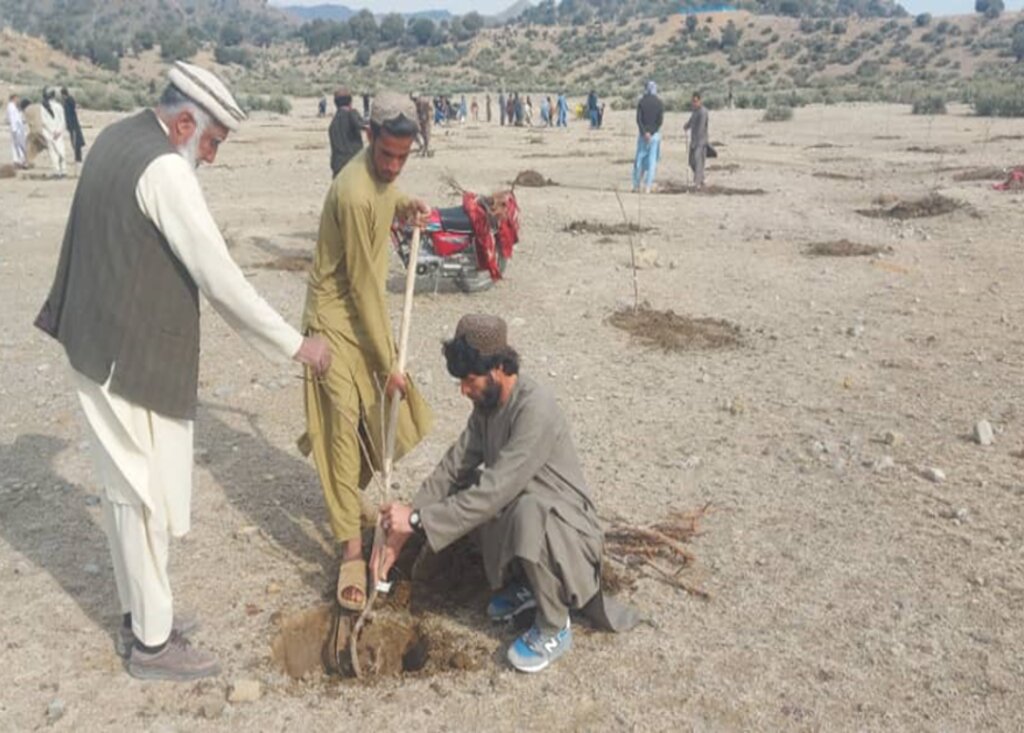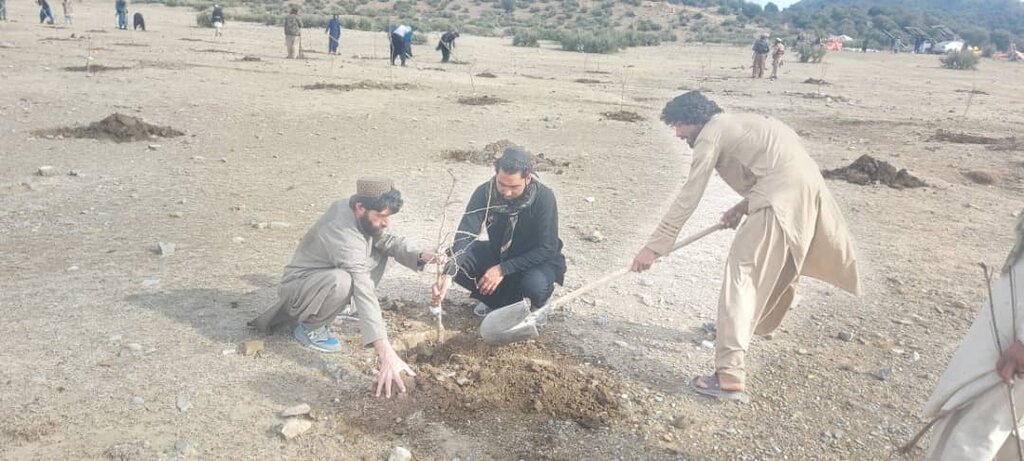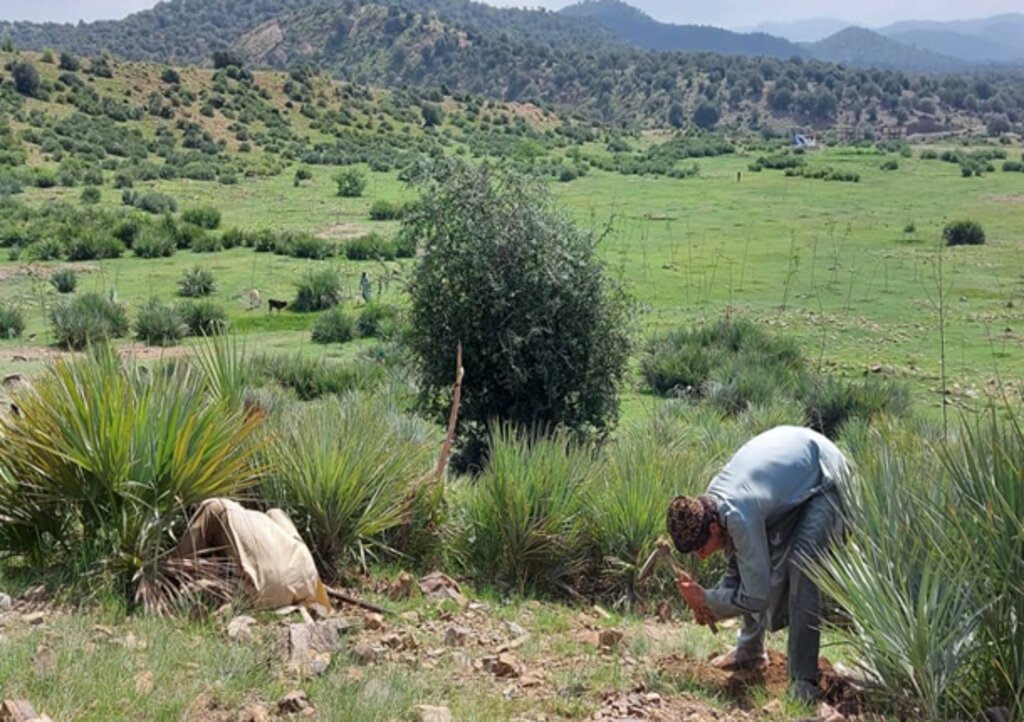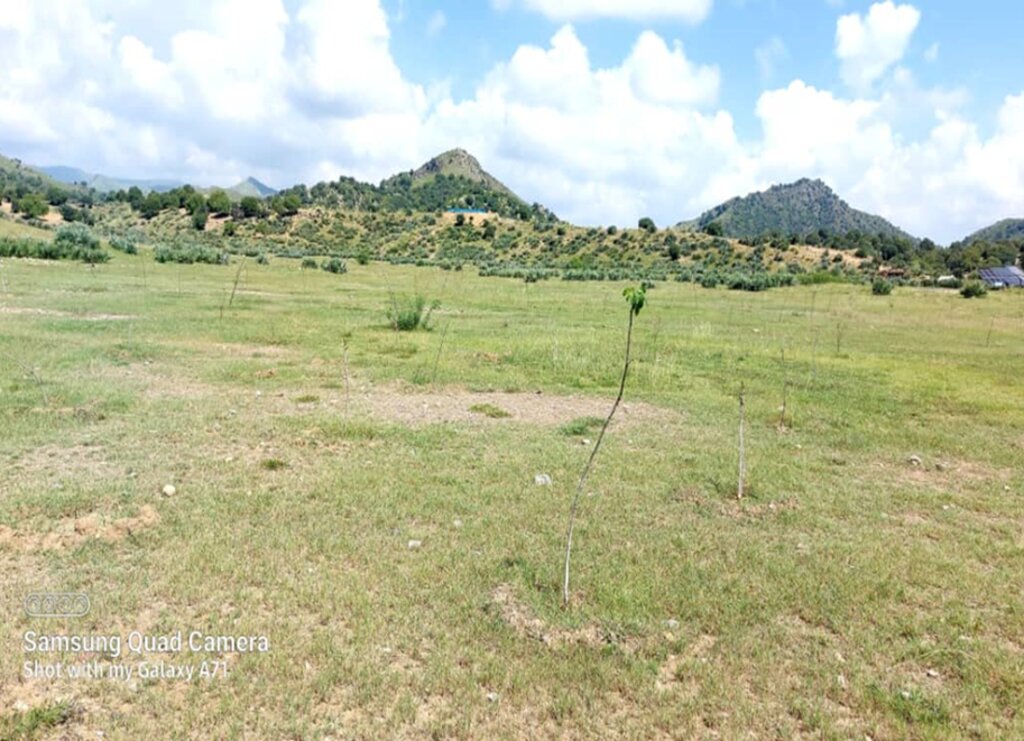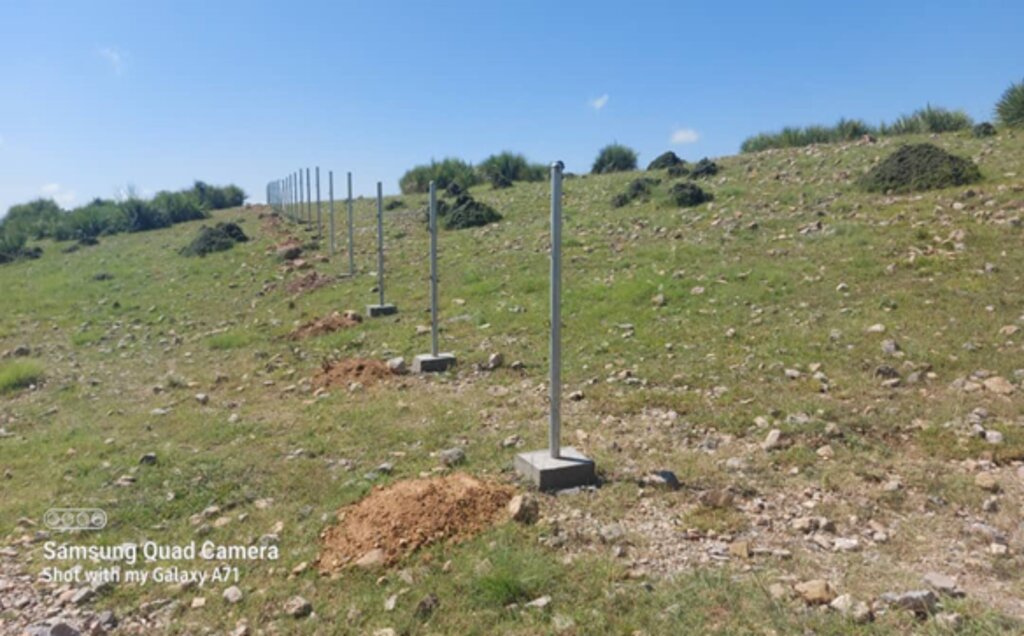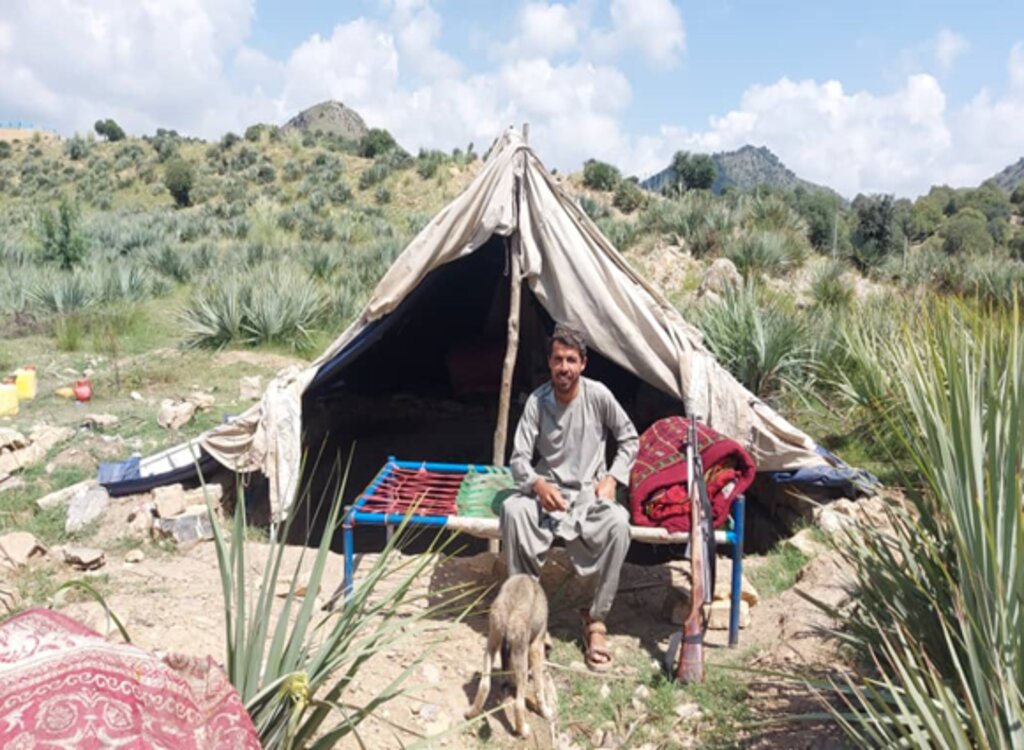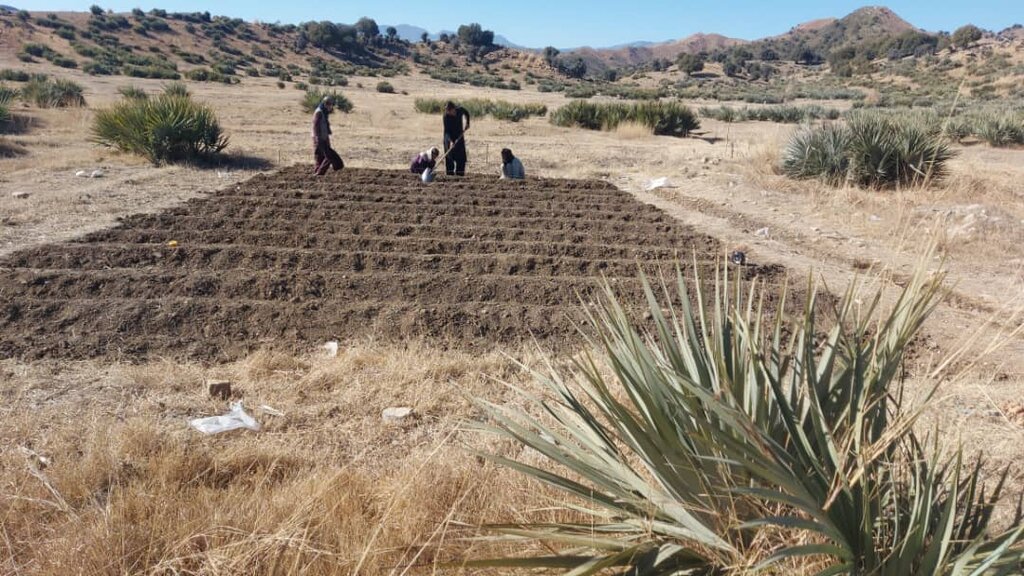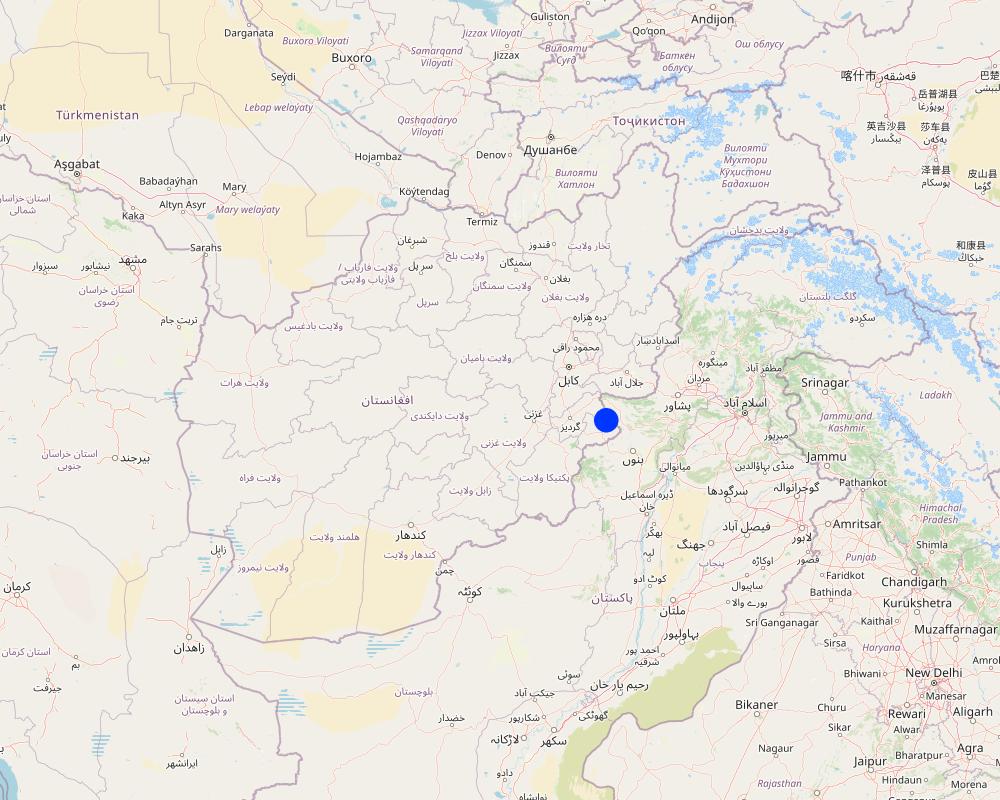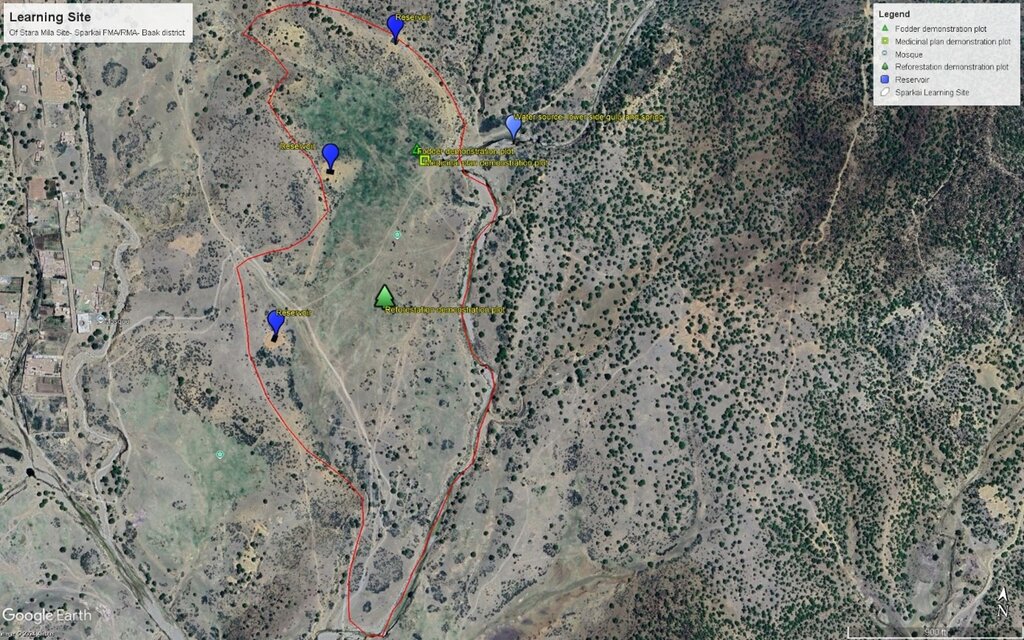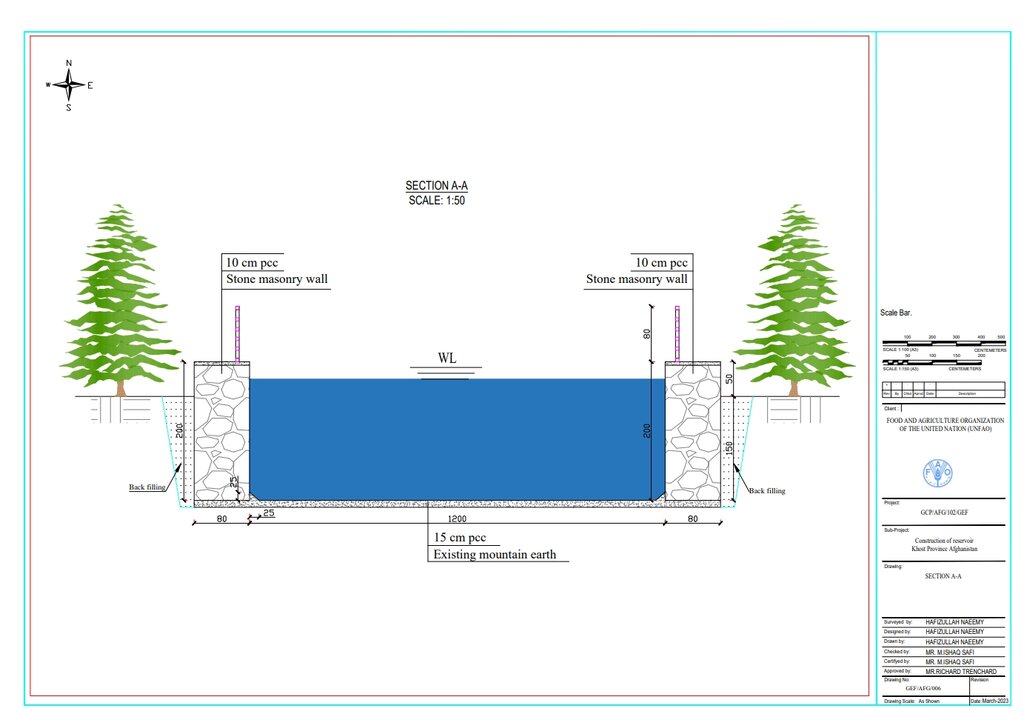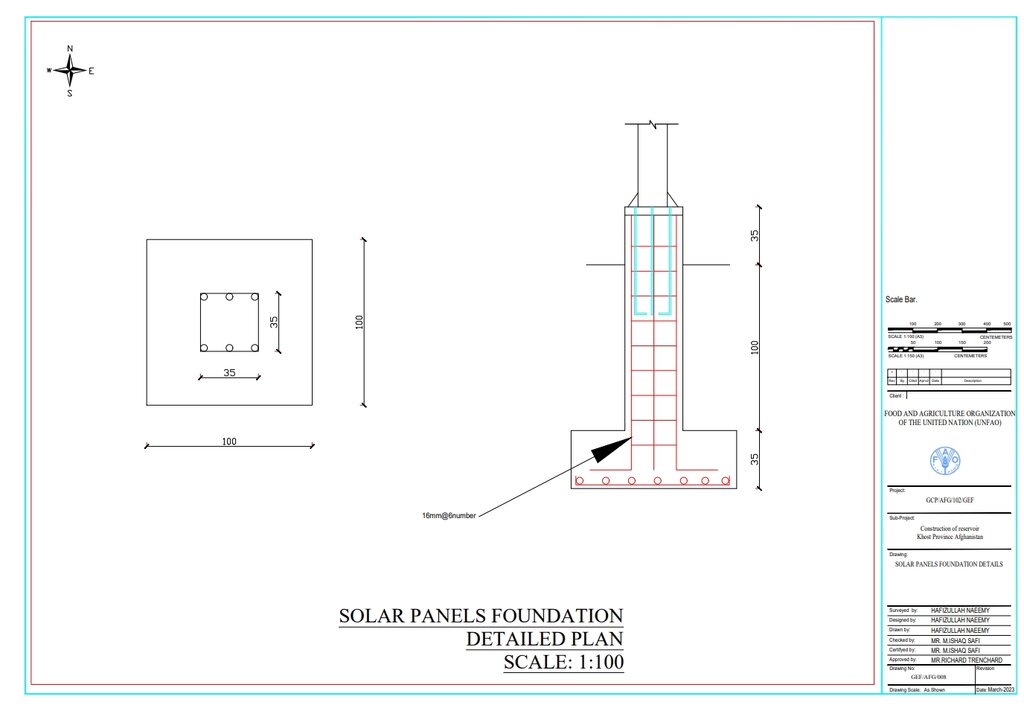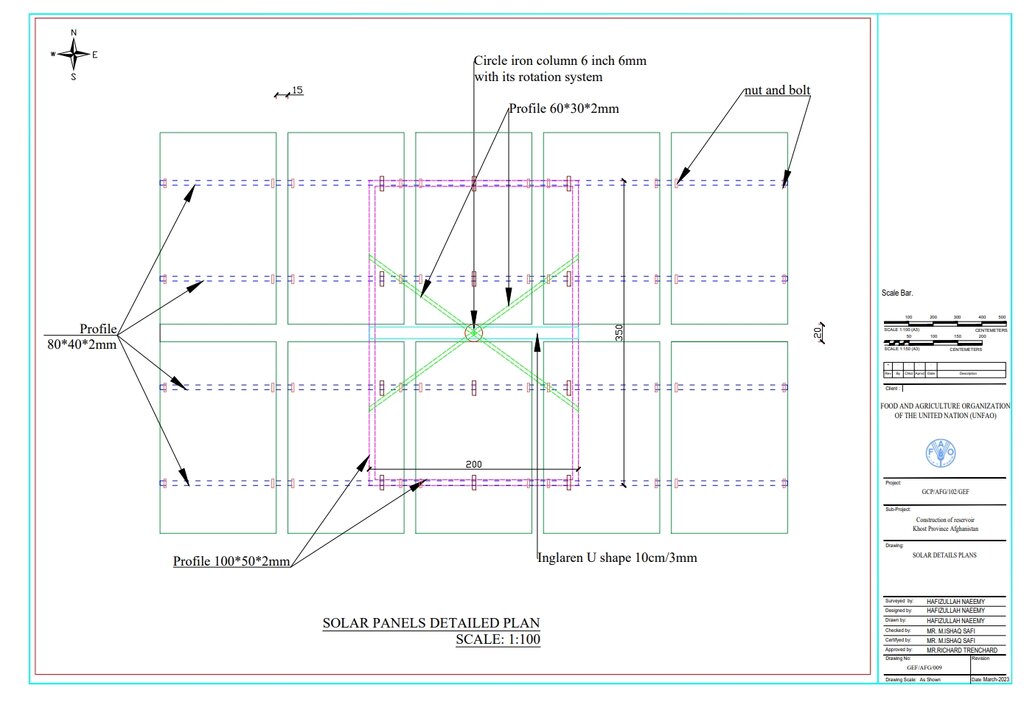Learning Site to promote Sustainable Land and Forest Management Practices in Khost [阿富汗]
- 创建:
- 更新:
- 编制者: Mohammad Arif
- 编辑者: Megha bajaj, Mohammad Aslam Hasand, Afghanistan Safi
- 审查者: Rima Mekdaschi Studer, Illias Animon, Muhammad Ishaq Safi
په خوست ولایت کی د ځنګل او ځمکی بنسټیزه مدیریت عملی کارونو د پاره دزده کړی ساحی رامینځ ته کول
technologies_7460 - 阿富汗
查看章节
全部展开 全部收起1. 一般信息
1.2 参与该技术评估和文件编制的资源人员和机构的联系方式
土地使用者:
Akbar Muhajir
Sparkai Forest and Rangeland Management Association
阿富汗
有助于对技术进行记录/评估的项目名称(如相关)
Combating land degradation and biodiversity loss by promoting sustainable rangeland management and biodiversity conservation in Afghanistan有助于对技术进行记录/评估的机构名称(如相关)
FAO Afghanistan (FAO Afghanistan) - 阿富汗1.3 关于使用通过WOCAT记录的数据的条件
编制者和关键资源人员接受有关使用通过WOCAT记录数据的条件。:
是
1.4 所述技术的可持续性声明
这里所描述的技术在土地退化方面是否存在问题,导致无法被认为是一种可持续的土地管理技术?:
否
1.5 参考关于SLM方法(使用WOCAT记录的SLM方法)的调查问卷
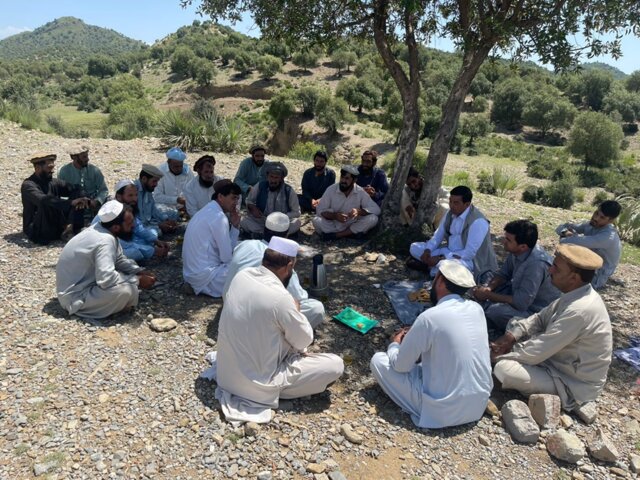
Stakeholder collaboration for building Learning Site for landscape … [阿富汗]
To raise awareness and ensure clear role delineation, a series of consultations were held with the local community, the Forest Management/Rangeland Management (FM/RM) association, and other key stakeholders. Memorandum of Understanding (MoU) that formally outlined the roles and responsibilities of each party was signed. Additionally, the FM/RM association issued a …
- 编制者: Mohammad Arif
2. SLM技术的说明
2.1 技术简介
技术定义:
The learning site incorporates several key elements of the technology including a solar-powered water lifting system, three reservoirs and an adopted irrigation system. It features demonstration plots for various initiatives, such as tree planting (walnut, almond, pomegranate and mulberry, the cultivation of fodder (alfalfal Mazari palm) and and medicinal plants (e,g, cumin), and a nursery (walnut) established through the community’s own contributions.
2.2 技术的详细说明
说明:
The site was rich in flora and fauna, but human and animal interference has led to significant degradation. Many indigenous plants have been uprooted, and wildlife has migrated due to the loss of habitat. In response, the community has begun to manage and restore the land through practices like rotational grazing and quarantine measures to combat illegal logging. The degradation of natural resources, particularly forests and rangelands, has significantly impacted local communities in Khost. Many residents rely on these resources for fuel, heating, and grazing livestock. However, challenges such as overgrazing, the uprooting of bushes and shrubs, and deforestation for fuel have led to considerable environmental degradation. The lack of proper management of these natural resources has resulted in consistent flooding, which erodes and pollutes agricultural lands. Additionally, local communities often do not recognize the value of these resources, leading to unsustainable land-use practices. Poverty, ongoing conflicts, political instability, and unemployment have driven residents to cut down trees for sale in local markets to support their livelihoods.
To address these challenges, we conducted a participatory assessment involving local communities and stakeholders, aiming to establish a learning site for sustainable land and forest management practices. Our assessment revealed that many local residents were unaware of sustainable practices or the ecological significance of these resources, contributing to ongoing environmental degradation.
After assessing the natural resources and community needs, we established a learning site for sustainable forest and rangeland management. Feasibility studies helped us identify available water sources, assess community interest, and select suitable land next to forests and rangelands. The site selected is easily accessible, located about 10 kilometers from the main road.
In the initial phase, we installed 26 solar panels on three metal stands, each with a capacity of 400 watts, positioned 200 meters from the water source. At the water source, we installed a 2-inch submersible pump to lift water to the learning site, which encompasses approximately 20 hectares of land across three small hills, each situated 300 meters apart.
We constructed three reservoirs, each with a capacity of 192 cubic meters. The first reservoir is located 300 meters from the water source and is fed by the solar system. A pipe network system utilizing 2-inch pipes connects the water source to the first reservoir and the other two reservoirs. This system allows the reservoirs to supply water to lower fields or demonstration plots via gravity.
In the demonstration plots, a network of pipes was installed every 50 meters, with taps placed accordingly. We established a 20-hectare learning site focused on sustainable forest and rangeland management practices, featuring demonstration plots for reforestation, fodder and medicinal plant production, reseeding, and a forest nursery. The dimensions of these plots include 10 hectares for reforestation, 2 hectares for fodder production, 0.5 hectares for medicinal plants, and 0.1 hectares for the walnut nursery. A total of 3,000 forest species were planted in the reforestation plot, along with alfalfa and Mazari palm in the fodder plots, and black cumin in the medicinal plot.
These plots are irrigated using flexible 1-inch pipes connected to the taps installed every 50 meters. Given Khost Province's favorable weather conditions, the plants require irrigation primarily from April to August; outside of this interval, the irrigation system provides sufficient water to sustain the site. The site were fenced with barbed wire for protection.
The technology is applied to communal land adjacent to forests and rangelands. It serves as an educational center for the local community, focusing on sustainable landscape restoration and management. A savings box was created, and a Forest and Rangeland Management Association was established. Social funds were set up, along with fencing and hiring guards for the maintenance of the technology.
Key infrastructure was established, including a solar-powered lifting system, constructed reservoirs, and a piping network for irrigation. Various forest species were planted in reforestation plots, while local seeds were planted in fodder and medicinal plots. Additionally, walnut seeds were sown in a nursery for diverse restoration practices. These efforts have revitalized the land. Barbed wire fencing was installed for protection, and the site is now fully operational as a learning site.
The introduction of this technology led to positive changes in the local community. They have successfully quarantined forest and rangeland, implemented rotational grazing, and collected local seeds and cuttings to plant on degraded lands and riverbanks. Community-based nurseries were also established to transplant seedlings into degraded forest areas, helping to revitalize natural resources.
The local community is optimistic about the technology, particularly the reservoir construction and solar-powered lifting systems that ensure water availability, as well as the restoration techniques employed. However, they expressed concerns about interference from neighbors, livestock grazing, floods that can clog pumps, and damage from hail and windstorms to solar panels.
2.3 技术照片
2.4 技术视频
注释、简短说明:
N/A
2.5 已应用该技术的、本评估所涵盖的国家/地区/地点
国家:
阿富汗
区域/州/省:
Khost
有关地点的进一步说明:
Stara Mila, Sparkai village of Baak district
具体说明该技术的分布:
- 适用于特定场所/集中在较小区域
技术现场是否位于永久保护区?:
否
注释:
The site is situated near a forest and rangeland, approximately 20 km from the Baak main road, extending towards the Zazi Maidan district. It is classified as communal land
Map
×2.6 实施日期
注明实施年份:
2023
2.7 技术介绍
详细说明该技术是如何引入的:
- 通过项目/外部干预
注释(项目类型等):
FAO- GEF-07 Combating land degradation and biodiversity loss by promoting sustainable rangeland management and biodiversity conservation in Afghanistan (GEF7)
3. SLM技术的分类
3.1 该技术的主要目的
- 减少、预防、恢复土地退化
- 保护生态系统
- 保持/提高生物多样性
- 适应气候变化/极端天气及其影响
- serves as educational centre for the local community on sustainable landscape restoration and management
3.2 应用该技术的当前土地利用类型
同一土地单元内混合使用的土地::
是
具体说明混合土地使用(作物/放牧/树木):
- 林牧业

农田
- 乔木与灌木的种植
乔木和灌木种植 - 指定作物:
- 水果、其他
- 树坚果(巴西坚果、开心果、核桃、杏仁等)
- walnut, almond, pomegranate, mulberry
每年的生长季节数:
- 1
采用间作制度了吗?:
否
采用轮作制度了吗?:
否
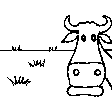
牧场
粗放式放牧:
- 游牧
- 半游牧畜牧业
集约放牧/饲料生产:
- 收割和携带/零放牧
- 改良牧场
动物类型:
- cattle - dairy and beef (e.g. zebu)
- 山羊
- 绵羊
是否实行作物与牲畜的综合管理?:
否
产品和服务:
- 肉类
- 奶类
品种:
cattle - dairy and beef (e.g. zebu)
计数:
510

森林/林地
- (半天然)天然森林/林地
(半天然)天然森林/林地:具体说明管理类型:
- 清除枯木/剪枝
- 非木材森林的利用
(半)天然林类型:
- 亚热带山地系统天然植被
- wild olive, black thorn, hop bush, Mazari palm, cumin
以上的树木是落叶树还是常绿树?:
- 混合落叶或常绿
产品和服务:
- 木材
- 其它森林产品
- 娱乐/旅游
- 自然灾害防护
注释:
Due to poor management, the land has been overgrazed. To address this, we established a learning site focused on restoration through various interventions: reforestation, fodder and medicinal plant demonstration plots, and a 50-square-meter nursery for sapling production. The site is protected by fencing to prevent herders from grazing, allowing them to collect fodder instead. Some fodder is left in the field to produce seeds for natural regeneration.
Forest and Rangeland Management Association focuses on:
Local seed collection: Gathering native seeds to enhance biodiversity and ensure ecosystem resilience.
Ecotourism development: Encouraging visitors to explore the sites, fostering appreciation for local flora and fauna while supporting conservation efforts.
Regeneration of native species: Implementing strategies to restore and regenerate various native plant species, which play crucial roles in maintaining ecological balance.
Fodder production for silage: Cultivating high-quality fodder crops that contribute to livestock nutrition and support sustainable agriculture.
Sapling production through nurseries: Establishing nurseries dedicated to growing saplings of native forest species as well as fruit and nut trees, which can be used for reforestation, habitat restoration efforts and generating income.
3.3 由于技术的实施,土地使用是否发生了变化?
由于技术的实施,土地使用是否发生了变化?:
- 是(请在技术实施前填写以下有关土地利用的问题)
同一土地单元内混合使用的土地::
是
具体说明混合土地使用(作物/放牧/树木):
- 农牧业(包括农牧结合)

牧场
粗放式放牧:
- 游牧
- 半游牧畜牧业
集约放牧/饲料生产:
- 收割和携带/零放牧
- 改良牧场
动物类型:
- cattle - dairy and beef (e.g. zebu)
- 山羊
- 绵羊
是否实行作物与牲畜的综合管理?:
否
产品和服务:
- 肉类
- 奶类
品种:
cattle - dairy and beef (e.g. zebu)
计数:
510

森林/林地
- (半天然)天然森林/林地
(半天然)天然森林/林地:具体说明管理类型:
- 清除枯木/剪枝
(半)天然林类型:
- 亚热带山地系统天然植被
- wild olive, Mazari palm, hop bush, black thorn and grasses
以上的树木是落叶树还是常绿树?:
- 混合落叶或常绿
产品和服务:
- 木材
- 薪材
- 娱乐/旅游
- 自然灾害防护
注释:
The area is a dry mountainous terrain with natural vegetation including wild olive, mazari palm, hopbush, and grasses. It supports nomadic and semi-nomadic pastoralism, primarily grazing goats, sheep, and cows.
3.4 供水
该技术所应用土地的供水:
- 混合雨水灌溉
注释:
Near the learning site, a gully and springs provide a year-round water source. We have installed a solar-powered lifting system and constructed three reservoirs to distribute water across 20 hectares, including the planted areas and demonstration plots. A network of pipes and taps with flexible hoses ensures efficient water distribution. This water source is exclusively for this site and does not affect neighboring villages or farmers.
3.5 该技术所属的SLM组
- 森林种植管理
- 改良的地面/植被覆盖
- 灌溉管理(包括供水、排水)
3.6 包含该技术的可持续土地管理措施
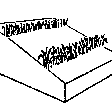
植物措施
- V1:乔木和灌木覆盖层
- V2:草和多年生草本植物
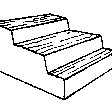
结构措施
- S6:墙、障碍物、栅栏、围墙
- S7:集水/供水/灌溉设备
- S10:节能措施
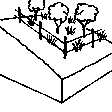
管理措施
- M2:改变管理/强度级别
- M3:根据自然和人文环境进行布局
注释:
The whole area 20 hectares have been fenced with barbed wire, under the structure measures, reservoirs have been constructed and dug pits for plants.
3.7 该技术强调的主要土地退化类型
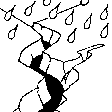
土壤水蚀
- Wt:表土流失/地表侵蚀
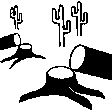
生物性退化
- Bc:植被覆盖的减少
- Bh:栖息地丧失
- Bs:质量和物种组成/多样性的下降
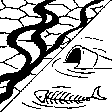
水质恶化
- Hs:地表水良变化
- Hg:地下水/含水层水位的变化
- Hp:地表水水质下降
- Hq:地下水水质下降
注释:
The local community relies on natural resources for their livelihoods, leading to deforestation, overgrazing, and the uprooting of shrubs and bushes for fuel. Severe runoff, droughts, and climate change have further contributed to environmental degradation.
3.8 防止、减少或恢复土地退化
具体数量名该技术与土地退化有关的目标:
- 修复/恢复严重退化的土地
- 适应土地退化
注释:
An educational center (learning site) has been established on degraded land to enhance the capacity of the local community and other stakeholders about best practices for landscape restoration.
4. 技术规范、实施活动、投入和成本
4.1 该技术的技术图纸
技术规范(与技术图纸相关):
This GIS map highlights learning site elements. The blue pins indicate water source and reservoirs, while the green rectangular pins represent fodder demonstration plot. Yellow squire pin mark area dedicated to medicinal plants, and green tree-shaped pin indicate reforestation plot. Finally, the red track pin indicates location of barbed wire fencing. The site map has been prepared after the completion of intervention.
作者:
Mohammad Omar Dost
日期:
17/09/2024
技术规范(与技术图纸相关):
Each of the three reservoirs measures 2m x 8m x 12m with a water depth of 2m, holding a total capacity of 192 cubic meters.
作者:
Hafizullah Naeemy
日期:
18/01/2023
技术规范(与技术图纸相关):
The solar panel stands, including their foundations, are 2 meters in height, with each panel measuring 1.2 meters high and 0.6 meters wide. The panels are installed at a 45° slope angle.
作者:
Hafizullah Naeemy
日期:
22/01/2023
技术规范(与技术图纸相关):
Detailed plan for solar panel installation: Three metal stands designed to support and rotate 26 solar panels, optimizing sunlight exposure throughout the day.
作者:
Hafizullah Naeemy
日期:
23/01/2023
4.2 有关投入和成本计算的一般信息
具体说明成本和投入是如何计算的:
- 每个技术区域
注明尺寸和面积单位:
20 Hectares
具体说明成本计算所用货币:
- 美元
注明雇用劳工的每日平均工资成本:
5 USD
4.3 技术建立活动
| 活动 | 时间(季度) | |
|---|---|---|
| 1. | Conduction of survey, feasibility study, and site selection | 1st month |
| 2. | Finding of water source | 2nd month |
| 3. | Installation of solar power lifting system | 4rd month |
| 4. | Construction of reservoirs | 5th month |
| 5. | Installation of irrigation piping system | 12th-1st month of the year |
| 6. | Saplings delivered by supplier to the site from contracted nurseries | 1st-2th month |
| 7. | Planting of saplings | 2-3rdmonth |
| 8. | Preparation of two demonstration plots for fodder and medicinal plants | 3rd month |
| 9. | Planting of seeds for fodder and medicinal plants | 3rd month |
| 10. | Installation of barbed wire fencing for 20 hectares | 7-9th month |
| 11. | Ensurance of operation and maintenance of all systems | 24th month |
4.4 技术建立所需要的费用和投入
| 对投入进行具体说明 | 单位 | 数量 | 单位成本 | 每项投入的总成本 | 土地使用者承担的成本% | |
|---|---|---|---|---|---|---|
| 劳动力 | Installation of solar system and pipe installation | Person/day | 100.0 | 6.0 | 600.0 | |
| 劳动力 | Digging pits, plantation and irrigation of Plants | Person/day | 453.0 | 6.0 | 2718.0 | 100.0 |
| 劳动力 | Excavation of foundation | Person/day | 80.0 | 5.0 | 400.0 | |
| 劳动力 | Preparing demonstration plots for fodder and medicinal plants | Square meter | 25000.0 | 0.13 | 3250.0 | 100.0 |
| 劳动力 | Stone Masonry | Person/day | 136.0 | 6.0 | 816.0 | |
| 劳动力 | Plastering | Person/day | 72.0 | 5.0 | 360.0 | |
| 劳动力 | Plain cement concrete | Person/day | 57.0 | 5.0 | 285.0 | |
| 劳动力 | Plain cement concrete PCC M20 | Person/day | 390.0 | 5.0 | 1950.0 | |
| 设备 | Entrance Gate | Number | 1.0 | 200.0 | 200.0 | |
| 设备 | Solar panel 400W | Sheet | 26.0 | 140.0 | 3640.0 | |
| 设备 | Rotating PV panel mount | Number | 3.0 | 350.0 | 1050.0 | |
| 设备 | Submersible pump 2 inch (10PH-7500W) | Number | 1.0 | 300.0 | 300.0 | |
| 设备 | DC-AC current inverter 7.5-11kw | Number | 1.0 | 200.0 | 200.0 | |
| 设备 | Distribution board | Number | 1.0 | 75.0 | 75.0 | |
| 设备 | Sign board | Number | 3.0 | 3.0 | 9.0 | |
| 设备 | Sign board | Number | 1.0 | 150.0 | 150.0 | |
| 植物材料 | Walnut | Sapling | 2000.0 | 0.56 | 1120.0 | |
| 植物材料 | Almond | Sapling | 500.0 | 0.67 | 335.0 | |
| 植物材料 | Mulberry | Sapling | 100.0 | 0.44 | 44.0 | |
| 植物材料 | Pomegranate | Sapling | 500.0 | 0.51 | 255.0 | |
| 植物材料 | Alfalfa seed | Kg | 50.0 | 2.72 | 136.0 | |
| 植物材料 | Black Cumin seed | Kg | 15.0 | 6.72 | 100.8 | |
| 施工材料 | Tap | Number | 30.0 | 3.0 | 90.0 | |
| 施工材料 | Flexon 1 inch rubberized pipes | Meter | 1250.0 | 2.0 | 2500.0 | |
| 施工材料 | DC current wire | Meter | 100.0 | 2.0 | 200.0 | |
| 施工材料 | AC current wire | Meter | 150.0 | 2.0 | 300.0 | |
| 施工材料 | Polyethylene pipe 1.5 inch | Meter | 2000.0 | 2.0 | 4000.0 | |
| 施工材料 | Polyethylene pipe 2 inch | Meter | 780.0 | 3.0 | 2340.0 | |
| 施工材料 | Polyethylene pipe 3 inch | Meter | 300.0 | 5.0 | 1500.0 | |
| 其它 | Delivery to the site | Lump sum | 1.0 | 300.0 | 300.0 | |
| 其它 | Galvanized iron pipe 2 inch for pillar | Meter | 125.0 | 5.0 | 625.0 | |
| 其它 | Galvanized iron pipe 1.5 inch for bracing | Number | 470.0 | 10.5 | 4935.0 | |
| 其它 | Fence | Meter | 15.0 | 25.0 | 375.0 | |
| 其它 | Double strand galvanized barbed wire for fencing | Meter | 4200.0 | 0.25 | 1050.0 | |
| 技术建立所需总成本 | 36208.8 | |||||
| 技术建立总成本,美元 | 36208.8 | |||||
如果土地使用者负担的费用少于100%,请注明由谁负担其余费用:
FAO under GEF-7 project
注释:
The land users contributed primarily by digging pits for planting, preparing demonstration plots, and maintaining the system. Additionally, they hired guards to protect the area from disturbances. All other costs associated with the project were covered by the FAO GEF-7.
4.5 维护/经常性活动
| 活动 | 时间/频率 | |
|---|---|---|
| 1. | Removal of sediment from reservoirs | Spring/annually |
| 2. | Safeguarding the site such as solar system, and on-site interventions | All seasons/regular |
| 3. | Repairing solar system & water pump and pipes | Regularly |
| 4. | Demonstration plots maintenance (pest-diseases control, mulching, weeding and Irrigation | Spring & Automn/annually |
| 5. | Replacing dead and dried plants | Feb/two times (1st & 2nd year) |
| 6. | Repairing fencing | Year around |
4.6 维护/经常性活动所需要的费用和投入(每年)
| 对投入进行具体说明 | 单位 | 数量 | 单位成本 | 每项投入的总成本 | 土地使用者承担的成本% | |
|---|---|---|---|---|---|---|
| 劳动力 | Labour for cleaning the reservoir from sediment annually | Person/day | 15.0 | 5.0 | 75.0 | 100.0 |
| 劳动力 | Hiring guards for safeguarding the site | Person/day | 12.0 | 100.0 | 1200.0 | 100.0 |
| 劳动力 | Fixing pump when needed | Lump sum | 1.0 | 50.0 | 50.0 | 100.0 |
| 劳动力 | Repairing pipes | Lump Sum | 1.0 | 100.0 | 100.0 | 100.0 |
| 劳动力 | Repairing solar panel when required | Lump sum | 1.0 | 1000.0 | 1000.0 | 100.0 |
| 劳动力 | Weed control | Person/day | 10.0 | 5.0 | 50.0 | 100.0 |
| 劳动力 | Integrated Pest Management | Lump sum | 1.0 | 5.0 | 5.0 | 100.0 |
| 劳动力 | Irrigation | Person/day | 8.0 | 50.0 | 400.0 | 100.0 |
| 植物材料 | Saplings | Number | 1500.0 | 0.56 | 840.0 | 100.0 |
| 植物材料 | Local Seed | Kg | 15.0 | 26.0 | 390.0 | 100.0 |
| 施工材料 | Barbed wire | meter | 3000.0 | 0.14 | 420.0 | 100.0 |
| 其它 | Replacing dead and dried plants | Lump sum | 1.0 | 300.0 | 300.0 | |
| 技术维护所需总成本 | 4830.0 | |||||
| 技术维护总成本,美元 | 4830.0 | |||||
4.7 影响成本的最重要因素
描述影响成本的最决定性因素:
Construction materials cost
5. 自然和人文环境
5.1 气候
年降雨量
- < 250毫米
- 251-500毫米
- 501-750毫米
- 751-1,000毫米
- 1,001-1,500毫米
- 1,501-2,000毫米
- 2,001-3,000毫米
- 3,001-4,000毫米
- > 4,000毫米
农业气候带
- 半干旱
5.2 地形
平均坡度:
- 水平(0-2%)
- 缓降(3-5%)
- 平缓(6-10%)
- 滚坡(11-15%)
- 崎岖(16-30%)
- 陡峭(31-60%)
- 非常陡峭(>60%)
地形:
- 高原/平原
- 山脊
- 山坡
- 山地斜坡
- 麓坡
- 谷底
垂直分布带:
- 0-100 m a.s.l.
- 101-500 m a.s.l.
- 501-1,000 m a.s.l.
- 1,001-1,500 m a.s.l.
- 1,501-2,000 m a.s.l.
- 2,001-2,500 m a.s.l.
- 2,501-3,000 m a.s.l.
- 3,001-4,000 m a.s.l.
- > 4,000 m a.s.l.
说明该技术是否专门应用于:
- 凸形情况
关于地形的注释和进一步规范:
The site is situated near a forest and rangeland, with a gentle slope of approximately 45 degrees and an elevation of 1,279.49 meters above sea level. Surrounding mountains are covered with wild olive forests.
5.3 土壤
平均土层深度:
- 非常浅(0-20厘米)
- 浅(21-50厘米)
- 中等深度(51-80厘米)
- 深(81-120厘米)
- 非常深(> 120厘米)
土壤质地(表土):
- 中粒(壤土、粉土)
土壤质地(地表以下> 20厘米):
- 中粒(壤土、粉土)
表土有机质:
- 低(<1%)
5.4 水资源可用性和质量
地下水位表:
5-50米
地表水的可用性:
好
水质(未处理):
良好饮用水
水质请参考::
地下水和地表水
水的盐度有问题吗?:
否
该区域正在发生洪水吗?:
是
规律性:
偶然
关于水质和水量的注释和进一步规范:
The water quality meets site requirements; however, seasonal fluctuations occur due to droughts. Floods in the lower gully, carry debris and sediments that can impact the source.
5.5 生物多样性
物种多样性:
- 中等
栖息地多样性:
- 中等
关于生物多样性的注释和进一步规范:
The site was rich in flora and fauna, but human and animal interference has led to significant degradation. Many indigenous plants have been uprooted, and wildlife has migrated due to the loss of habitat. In response, the community has begun to manage and restore the land through practices like rotational grazing and quarantine measures to combat illegal logging.
5.6 应用该技术的土地使用者的特征
定栖或游牧:
- 定栖的
生产系统的市场定位:
- 混合(生计/商业)
非农收入:
- 低于全部收入的10%
相对财富水平:
- 贫瘠
个人或集体:
- 团体/社区
机械化水平:
- 手工作业
性别:
- 男人
土地使用者的年龄:
- 中年人
5.7 应用该技术的土地使用者使用的平均土地面积
- < 0.5 公顷
- 0.5-1 公顷
- 1-2 公顷
- 2-5公顷
- 5-15公顷
- 15-50公顷
- 50-100公顷
- 100-500公顷
- 500-1,000公顷
- 1,000-10,000公顷
- > 10,000公顷
这被认为是小规模、中规模还是大规模的(参照当地实际情况)?:
- 小规模的
注释:
The land in question is communal and remains undivided, with no plans for future distribution. Most users have limited agricultural land downstream, typically no more than 0.5 hectares per household for crop cultivation. The learning site has been dedicated by the local community for future generations and educational purposes. Previously, this land was unused and primarily designated for grazing.
5.8 土地所有权、土地使用权和水使用权
土地所有权:
- 社区/村庄
土地使用权:
- 社区(有组织)
用水权:
- 社区(有组织)
土地使用权是否基于传统的法律制度?:
是
具体说明:
Land use rights in traditional legal systems are generally straightforward, with each family in a village having equal access to natural resources.
注释:
Overall, this traditional approach emphasizes community and family roles in resource management, balancing individual rights with communal responsibilities
5.9 进入服务和基础设施的通道
健康:
- 贫瘠
- 适度的
- 好
教育:
- 贫瘠
- 适度的
- 好
技术援助:
- 贫瘠
- 适度的
- 好
就业(例如非农):
- 贫瘠
- 适度的
- 好
市场:
- 贫瘠
- 适度的
- 好
能源:
- 贫瘠
- 适度的
- 好
道路和交通:
- 贫瘠
- 适度的
- 好
饮用水和卫生设施:
- 贫瘠
- 适度的
- 好
金融服务:
- 贫瘠
- 适度的
- 好
注释:
Due to three to four decades of political conflict, people lack access to essential services and infrastructure. This situation has been largely overlooked, with insufficient attention given to providing these services. Additionally, there has been a lack of budget allocation and support from the government and NGOs. As a result, communities continue to suffer from inadequate resources and infrastructure development.
6. 影响和结论性说明
6.1 该技术的现场影响
社会经济效应
生产
畜牧生产
注释/具体说明:
The local community is adopting rotational grazing and quarantine measures on rangeland, while also exploring silage-making and hay production techniques. Additionally, they are identifying alternative winter feed options for their animals.
森林/林地质量
注释/具体说明:
The local community has successfully quarantined all forest areas, effectively controlling illegal logging and managing grazing. As a result, the forest has been revitalized and is undergoing natural regeneration
非木材林业生产
注释/具体说明:
The local community is utilizing Mazari palm for handcrafted products while also focusing on agroforestry. They have established fruit orchards and are collecting blackthorn, which they sell in the bazaar to support their livelihoods.
生产区域
注释/具体说明:
Previously, the community overgrazed the land and cut down trees for their livelihoods. However, after implementing quarantine measures and rotational grazing practices, the area is now showing signs of regeneration and has the potential to become a productive landscape in the future.
土地管理
注释/具体说明:
Following these practices, the local community has effectively managed more land under proper stewardship, including forest and rangeland quarantine and controlled grazing. They are now applying these methods in their vicinity, leading to the successful management of additional areas.
水资源可用性和质量
灌溉用水的可用性
注释/具体说明:
Through revegetation and improved land cover, water seeps into the ground, recharging the water table and increasing availability for irrigation.
收入和成本
收入来源的多样性
社会文化影响
娱乐机会
注释/具体说明:
FAO and Forest and Rangeland Management Association have successfully revitalized this area, transforming it into a lush and green landscape. Many of the previously destroyed species regenerated, creating a thriving ecosystem. This site is now a focal point, surrounded by majestic mountains and rich forests, with water flowing from the upper watershed. It has become a popular destination for picnics and visits, where people can enjoy the soothing sounds of birds and the vibrant greenery of the surroundings.
社区机构
国家机构
SLM/土地退化知识
冲突缓解
生态影响
水循环/径流
水量
水的回收/收集
地表径流
土壤
土壤水分
土壤覆盖层
土壤流失
生物多样性:植被、动物
植被覆盖
注释/具体说明:
Through applying quarantine, rotational grazing, control grazing the vegetation covered increased.
生物量/地上C
注释/具体说明:
Biomass above the ground is increased
植物多样性
注释/具体说明:
most of the seed regenerating and all the cut trees and bushes revegetated.
动物多样性
注释/具体说明:
Various migratory animals and birds have returned to the area due to the protection measures in place and the prohibition of human activities.
减少气候和灾害风险
洪水影响
注释/具体说明:
Most of the riverbanks have been successfully revegetated through effective control measures, including water filtration during rain and floods. Local communities have also learned to plant cuttings along the riverbanks and shorelines, contributing to the restoration of these vital ecosystems.
干旱影响
碳和温室气体的排放
注释/具体说明:
Healthy ecosystems like forests and wetlands act as carbon sinks, absorbing more CO2 through photosynthesis. Improved soil health and vegetation cover also enhance carbon storage, while restoring habitats promotes biodiversity, creating a more resilient ecosystem that sequesters carbon effectively.
6.2 该技术的场外影响已经显现
水资源可用性
注释/具体说明:
Through revegetation and improved land cover, water seeps into the ground, recharging the water table.
地下水/河流污染
风力搬运沉积物
对公共/私人基础设施的破坏
温室气体的影响
6.3 技术对渐变气候以及与气候相关的极端情况/灾害的暴露和敏感性(土地使用者认为的极端情况/灾害)
渐变气候
渐变气候
| 季节 | 增加或减少 | 该技术是如何应对的? | |
|---|---|---|---|
| 年温度 | 减少 | 非常不好 | |
| 年降雨量 | 增加 | 非常不好 | |
| 季雨量 | 夏季 | 增加 | 非常不好 |
气候有关的极端情况(灾害)
气象灾害
| 该技术是如何应对的? | |
|---|---|
| 局地雪暴 | 非常不好 |
气候灾害
| 该技术是如何应对的? | |
|---|---|
| 热浪 | 非常不好 |
| 干旱 | 非常不好 |
水文灾害
| 该技术是如何应对的? | |
|---|---|
| 山洪暴发 | 非常不好 |
注释:
Before the implementation of the project land users faced severe challenges, including drought, high temperatures, water scarcity for irrigation, reduced yields, and a lack of winter feed alternatives for livestock.
Following the introduction of sustainable rangeland management and biodiversity conservation, local communities adopted rotational grazing practices and protected forests from cutting, which had previously been their main source of income. As a result, vegetation cover improved, carbon stocks increased, and rainwater began to seep into the ground, recharging the water table, springs, canals, and Karezes. These efforts reulted in a more resilient and productive environment.
6.4 成本效益分析
技术收益与技术建立成本相比如何(从土地使用者的角度看)?
短期回报:
稍微积极
长期回报:
积极
技术收益与技术维护成本/经常性成本相比如何(从土地使用者的角度看)?
短期回报:
稍微积极
长期回报:
非常积极
6.5 技术采用
- 1-10%
在所有采用这项技术的人当中,有多少人是自发的,即未获得任何物质奖励/付款?:
- 0-10%
注释:
The adoption of the technology in the specified area has primarily been spontaneous, significantly influenced by the support provided by the project. While a small percentage of land users may have received material incentives, the majority embraced the technology due to its demonstrated benefits and the project's educational efforts. This support helped to build trust and confidence among the land users, enabling them to implement the technology effectively in their practices. Overall, this highlights the importance of community engagement and capacity building in fostering sustainable land management practices.
6.6 适应
最近是否对该技术进行了修改以适应不断变化的条件?:
否
6.7 该技术的优点/长处/机会
| 土地使用者眼中的长处/优势/机会 |
|---|
| It is crucial for local communities to learn sustainable land and forest restoration techniques. These methods are not only accessible but also involve minimal operational costs. By empowering land users with this knowledge. |
| We can adopt sustainable land and forest management practices to revitalize our degraded land. This learning process is straightforward and easily applicable. |
| We have great opportunities and abundant resources to utilize. This area serves as a hub for scaling sustainable practices, allowing us to learn, observe, and implement solutions that will benefit future generations. |
| We can efficiently use surface water for irrigation instead of groundwater, helping to restore degraded land through these initiatives. |
| Reduce greenhouse gas emissions through effective carbon sequestration. |
| Learn regeneration techniques, rainwater harvesting, and grazing management methods like rotational grazing. Focus on producing fodder and medicinal plants, while understanding indigenous plants and shrubs for the future. |
| 编制者或其他关键资源人员认为的长处/优势/机会 |
|---|
| This site is highly accessible, surrounded by dense forests and extensive rangelands that can be utilized sustainably. |
| Local community members, university students, and stakeholders can easily visit this site. |
| This site is an excellent destination for tourists to visit, enjoy, and learn about the importance of natural resources and their management techniques. |
| The local community can easily adopt these simple techniques to learn sustainable land and forest restoration practices. |
| The local community has hired guards to maintain the site effectively. They are gaining knowledge and enhancing their capacity for future interventions, contributing positively to development initiatives. |
6.8 技术的弱点/缺点/风险及其克服方法
| 土地使用者认为的弱点/缺点/风险 | 如何克服它们? |
|---|---|
| Insufficient maintenance and repair services for the technology. | Establishing strong linkages with service providers and maintenance support. This also facilitates nationwide technology transfer, enabling broader adoption and implementation of sustainable practices. |
| There is a lack of qualified professionals on-site to teach visitors the technical aspects of the technology. This gap hinders effective learning and limits the ability of visitors to fully understand and engage with the technology. | Hire on-farm officers to oversee and manage the learning site and provide information to visitors. |
| A check dam is required in the gully to store water for sustainability, especially during drought seasons when water availability decreases. | Construct a check dam in the lower section of the gully to store water for sustainability, allowing visitors to learn about water harvesting techniques. |
| There are currently no available resources for replacing the dead plants. | Establish nurseries for forest species to produce saplings that can replace dead and dried plants in the future. |
| 编制者或其他关键资源人员认为的弱点/缺点/风险 | 如何克服它们? |
|---|---|
| There are concerns about windstorms and hail potentially damaging the solar panels. | The local community should establish a social fund to cover repairs for any damage to solar panels caused by windstorms or hail, as well as to fund the installation of fencing around the solar panel stands. |
| Concerns have arisen regarding land disputes as the local community acts on land distribution amidst a growing population. | All villagers should receive a formal guaranteed letter, signed by the district governor, ensuring that no future actions will be taken to redistribute this site among the villagers. |
| There is a lack of essential water structures, such as percolation tanks and detention ponds, for effective rainwater harvesting. | Construct percolation tanks and detention ponds to harvest rainwater, which can be used to water livestock. Additionally, this initiative will provide an opportunity to learn and implement dryland farming techniques. |
| Too much water is wasted through flexible pipe basin irrigation methods. Additionally, required live hedges for fencing and windbreaks. | Install a drip irrigation system with an efficient piping layout and plant pine, poplar, and other trees alongside barbed wire to create a windbreak and a natural barrier for site protection. This will also provide an opportunity to learn various agricultural techniques. |
7. 参考和链接
7.1 信息的方法/来源
- 实地考察、实地调查
20
- 与土地使用者的访谈
11
- 与SLM专业人员/专家的访谈
5
- 根据报告和其他现有文档进行编译
3
(现场)数据是什么时候汇编的?:
10/10/2024
注释:
The project was actively involved in all phases, from selection to implementation. Data was collected from local community volunteers, as well as SLM specialists and engineers.
7.2 参考可用出版物
标题、作者、年份、ISBN:
N/A
7.3 链接到网络上的相关信息
标题/说明:
N/A
7.4 一般注释
The questionnaire is well-structured, but some sections, particularly 6.2 and 6.3, need simplification. Additionally, the database should provide outputs during data processing, highlighting both best practices and common mistakes related to the technology. This will help us generate a comprehensive report that showcases effective practices and identifies areas for improvement.
链接和模块
全部展开 全部收起链接

Stakeholder collaboration for building Learning Site for landscape … [阿富汗]
To raise awareness and ensure clear role delineation, a series of consultations were held with the local community, the Forest Management/Rangeland Management (FM/RM) association, and other key stakeholders. Memorandum of Understanding (MoU) that formally outlined the roles and responsibilities of each party was signed. Additionally, the FM/RM association issued a …
- 编制者: Mohammad Arif
模块
无模块


